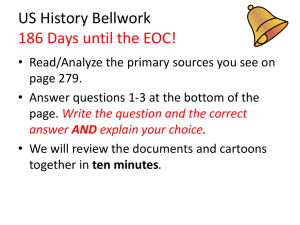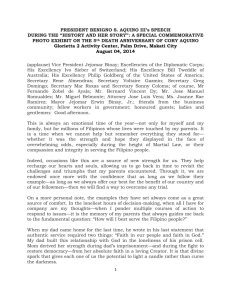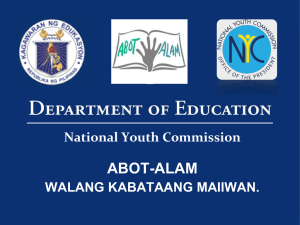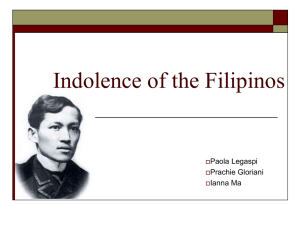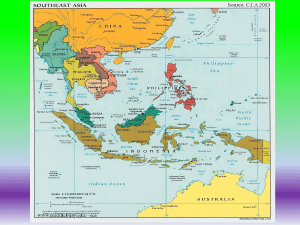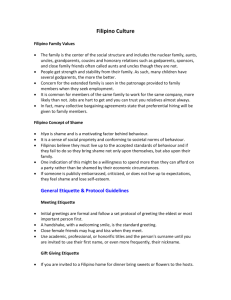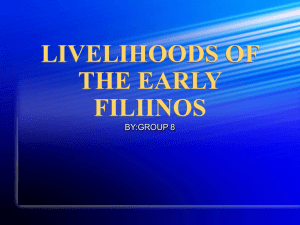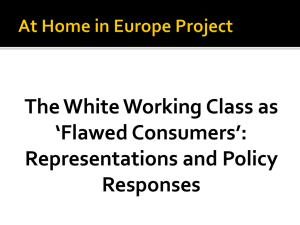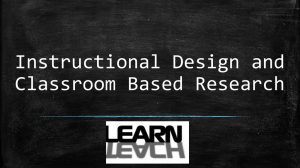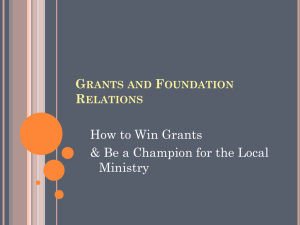CS18 - Mr. Mario Deriquito`s Presentation
advertisement
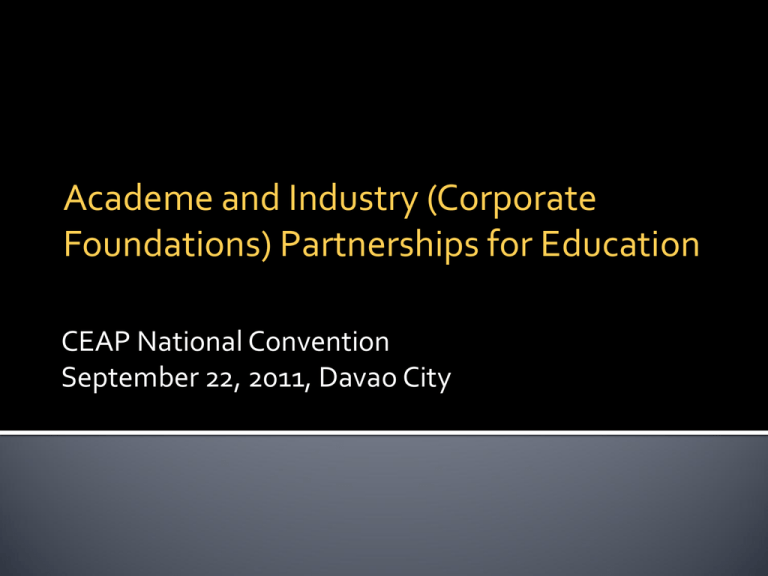
Academe and Industry (Corporate Foundations) Partnerships for Education CEAP National Convention September 22, 2011, Davao City Corporation/corporate foundation as donor Private school as recipient/ beneficiary Industry-Academe partnership for curriculum reform Corporation/corporate foundation brings resources/programs to schools Students/teachers as direct beneficiaries Corporation/corporate foundation work together on a community project Community/public schools as beneficiary Addressing the mismatch between skills needed by industry and those offered by schools TechVoc – DualTech approach Better done as a network rather than on individual school level Geographical clustering Key industry players to talk to: PMAP, industry associations, etc. Scholarships and other forms of educational assistance Awards for outstanding students/ teachers Teacher training and development Student leadership development programs League of Corporate Foundations A network of over 70 operating and grantmaking corporate foundations and corporations that promotes and enhances the strategic practice of Corporate Social Responsibility among its members and the larger business community, towards sustained national development. www.lcf.org League of Corporate Foundations Priority Causes Arts and Culture Education Enterprise Development CSR Capacity Building Environment Health League of Corporate Foundations Based on 2002-2007 data (Based from “Investing in Education” study (2008 by Karen Natera) Direct educational assistance for ECCD and public ES – Average of P3 million per organization per year Teacher training and development programs (54% of LCF members) -- Average of P1.2 million per organization per year. Technical Vocational Education -- Average of P1.35 million per organization per year, the biggest documented support by one organization was P9 million in 2006. Support for tertiary education – Average of P3.4 million per organization per year. Corporate-Academe Partnerships for the Community Gearing Up Internet Literacy and Access for Students (GILAS) Enabling Education Communities (EEC) Leadership Communities (LeadCom) Gearing up Internet Literacy and Access for Students (GILAS) Multi-sectoral initiative composed mainly of corporations and concerned non-profit institutions Aims to provide Internet access to all public secondary school students in the Philippines, thus giving them an opportunity to pursue a brighter future. Accomplishments As of August 2011 3,242 schools connected since 2005 13,175 Teachers trained on Internet Literacy, LAN administration, and PC maintenance and troubleshooting 528 school heads trained on ICT sustainability and leadership About P350 million raised Accomplishments GILAS was featured as a Best Practice under the MDG Target 8.F: "In cooperation with the Private Sector, make available the benefits of new technologies, especially Information and Communication". Enabling Education Communities A program that aims to put education as a priority concern of communities by improving the capability of the local governments and the local DepEd in mobilizing stakeholders for the improvement of education and the creation of a local stakeholder education alliance Youth organizations Barangays NGOs Business sector Local church LGU/ DepEd Private/state colleges or universities Civic organizations Overseas Filipinos Community/ parents, etc. Media Local office of resident congressman Strategic Partners Together with local Strategic Partners (usually a college/university per locality), various activities are implemented to build the capabilities of education communities Activities Education Summit Team Building and Visioning Workshop Planning and Resource Mobilization Project Implementation Evaluation and Phaseout Accomplishments Education Summit, Teambuilding and Visioning Workshop, and Planning Sessions were already conducted in the 5 pilot areas Ligao City, Albay Tiwi, Albay Malaybalay City, Bukidnon Camiguin Sibalom, Antique Examples of projects undertaken by Education Communities Engaging barangay leaders in ensuring that all school-age children in their areas are going to school Capability-building for school heads to provide better leadership to school governing councils Tapping community volunteers in literacy and reading campaigns Local resource mobilization and fundraising Strategic partner of Ayala Foundation Technical assistance provider – research, facilitating, teacher training, etc. Source of education materials Use of facilities for big group activities Leadership Communities (Leadcom) A Leadership Development Program for college students of academic institutions in a given province or city. Inspired by the Ayala Young Leader’s Congress, the project is implemented on the local level and provides opportunities for a greater number of student leaders to further develop their skills as leaders. Driven by partner schools in a defined area that are committed to promote and sustain youth leadership development, under the guidance of Ayala Foundation Goals and Objectives Develop synergy and cooperation between and among partner schools and other local institutions Form Leadership Communities Sustainable communities that will continuously work for the development of young leaders Formulate leadership development modules Develop capabilities of partner schools/groups in facilitating and conducting their own leadership development program Accomplishments and Plans Conducted 3-day Leadership camps for student leaders Trained local facilitators coming from the local colleges and universities Provided small grants to groups of young leaders to undertake community or school projects Helped the schools develop a continuing leadership development program on the school level Catanduanes Oriental Mindoro 12 sites in the next 2 years Some words about partnering with companies WHO they are WHAT they have WHY they will help HOW to engage them WHO WHAT they are they have Companies - Funds – WHY they will help - Sense of CSR, CSR marketing, - Tax CEO deduction discretionary - Contact or funds “champion” - Products - Publicity/ and services exposure - Facilities & - Opportunity equipment to promote - Technical products and expertise services - Employee - Opportunity volunteers to do good - Corporate foundation programs HOW to engage them - Find an ally inside - Explain to them the urgency and magnitude of the problem. - Explain to them the soundness of your project. - Show them your project’s alignment with their business goals - Show them the long-term benefits their businesses will derive if they support you or your project. - Offer them tax incentives on donations - Explain to them the publicity/ exposure they will get - Give them clear options on how they and their employees can help. - Show them how you can add • • • • • Existing school outreach programs Technical expertise especially in teacher training and research Small student contributions Student volunteers Use of facilities Stiff competition: among causes, among schools Balance tilted towards bigger schools Nature of company’s business versus school values? Another partnership possibility 57-75 Education Reform Movement League of Corporate Foundations Philippine Business for Social Progress Philippine Business for Education Ateneo Center for Educational Development Synergia Foundation Eugenia Apostol Foundation As of this school year …. Our public schools lack 66,800 classrooms DepEd cannot do it alone... We all need to pitch in … • Companies • Donor agencies • Ordinary citizens Ordinary Filipinos… • Appeal to their sense of citizenship • Opportunity to take part in nation-building • Has to be easy, simple, and doable 10 pesos a day for 10 months P300 per month P3,000 for 10 months X 2 million Filipinos = P6 billion -> 10,000 classrooms 2 million Filipinos • 50 from each of our 40,000 barangays • 200 from each of the top 10,000 companies • 800 from each of our 2,500 parishes • Half of our 4 million credit card holders • Students in schools • Overseas Filipinos 10 piso 10 buwan 10 libong silid-aralan Mobilizing the entire nation… Planned Activities (10/10/11 to 10/10/12) Grand launch on October 10, 2011 Use of all forms of media to reach Filipinos all over the world Partnering with organizations that have influence on large numbers of people Providing convenient and accessible donation channels Ensuring a fool-proof control system Classroom construction Individuals can help by … Direct bank deposits Online payments Credit card payments Payments through mobile phones Sending checks to designated offices Other channels Individuals can help by … Convince your Friends Relatives Associates to Donate Organizations can help by… Among your: Constituents Employees Students Parishioners 10 piso 10 buwan 10 libong silid aralan TEN Moves will happen if The Entire Nation moves! For further information: Email us at tenmoves@ayalafoundation.org Follow us on Twitter and Facebook
